List of Indoor Games
Everyone enjoys games because they provide entertainment as well as exercise. If we talk about Indoor games, these games refer to games that we can play under the house’s roof with so many people. For example, Ludo, Carrom, Puzzle, Card games, Chess, Table tennis, and board games.
Play is a part of education and important for our life. If there is no play, life becomes monotonous. Our brain and body are both exercised when we play games. We may enhance our bodies and minds while learning qualities and lessons by playing indoor games. They also teach us how to be disciplined and polite. We can improve our self-esteem as well as our sense of fair play. We can learn how to follow the rules and regulations correctly.
More about Indoor Games
Indoor video games have been first invented to enable humans to amuse themselves within their houses’ confines. They were created to pass time at home when the weather became bad or a person was confined to their bed by illness.

Types of Indoor Games
Games are classified according to their medium and format. From the conventional, tabletop board video games to the ultra-modern stimulating games, there are numerous types to keep us entertained and lively.
- Board Games
- Card Games
- Strategy Games
- Pencil and Paper Games
- Guessing Games
- Online Games
- Lawn Games
- Educational Games
- Role Play Games
1. Board Games:
Board games are performed on a flat floor called the “board”. They are a well-known table top video game that incorporates features such as cubes and playing pieces. The actions of those pieces manifest as in keeping with a set of policies which the players ought to abide by using! The sport entails plenty of strategic questioning, at the side of a bit of luck! Ludo and Snakes and Ladders are the most basic board games, whereas Advanced Squad Leader is more difficult.
2. Card Games:
A card game is any game in which the primary mechanism is playing cards, whether traditional or game-specific. Each deck has 52 cards separated into four suits: Hearts, Spades, Diamonds, and Clubs. The cards range in value from 2 to 10, with the Ace, King, Queen, and Jack being the most valuable. Cards are used in a variety of games, including Poker, Rummy, Solitaire, and others. Card games are typically played for playing and making a living than for mere enjoyment functions.
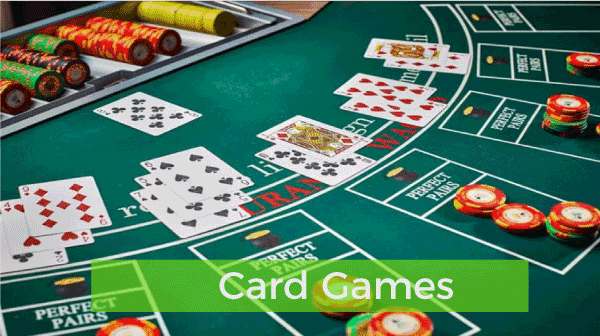
Many classic deck card games have formally regulated rules, and worldwide competitions are held. Still, the majority are folk games, with rules that vary by region, culture, and individual. A deck or pack of identically sized and shaped playing cards is used in a card game. There are two sides to each card: the front and the reverse. There could be duplicates, or all of the cards’ faces could be unique. It may shuffle several decks together to produce a single pack or shoe in specific instances.
3. Strategy Games
This type of indoor games include Chess, Chinese Checkers, Game of Go, and more. The strategy games contain excessive highbrow thinking and situational selection-making abilities.
4. Pencil and Paper Games
Paper and Pencil games are single-player or multi-player games that require only a piece of paper and a pencil or pen to play. They are inexpensive to play and do not require any additional equipment like boards or dimes. For example, Sudoku, Join the Dots, Tic-Tac-Toe, Pictionary, Bulls and Cows games are developed for children and adults. The challenging part of these games is that you aren’t allowed to erase something once it is on paper.
5. Guessing Games
Guessing games are laugh party video games in which the players ought to find out data using positive recommendations. The opponent can use photos, acting, or clues to assist the player in guessing the word. Popular among those games is Guess Who? In which the gamers ought to bet who the individual is based totally on the descriptions. Dumb Charades, Guess the Animal, Guess the Object (by feeling with hands), Hangman (guess the word), and Cup and Ball (guess the position of the ball) are some examples.
6. Online Games
Online video games usually require a generation tool like a pc, gaming console, or telephone with an active net connection. Several of these can be downloaded and played offline if the network is down. These games cover a wide range of topics, from simple board games like Ludo, Chess, and Card Games to extremely realistic shooting games and multi-player role-playing games.
7. Educational Games
Educational games are unique activities that provide the player with educational benefits. They’re appropriate for people of all ages, from infants to adults. The games are used as educational tools to broaden conceptual knowledge and develop cognitive skills.
8. Roleplay Games
Roleplay games use fake toys like dolls to inspire creativity and imagination in youngsters. These activities use fake variations of actual-time gadgets like physician’s kit, engineer’s equipment, kitchen units, lecture room set up etc. To get kids involved in important activities, they also expand learning opportunities and allow for self-expression.
What is the significance of Indoor Games?
1. Decrease Stress and Increase Happiness: “Stress is the silent murderer of people’s lives.” The biggest cause of stress is loneliness, which occurs due to separation from friends or loved ones.The indoor sport enables you to get rid of pressure and facilitates to make you glad all of the time. The time you spend with your friends or loved ones is the most valuable part of the day. There is a superb quantity of enjoyment and laughter advanced when we play with pals.
2. Indoor Games Help in Socializing: Indoor games provide a possibility to socialize with buddies and other people you play with. Another advantage of socializing is that you may always feel at ease and calm.
3. Boost Your Productivity and Focus: A “productive attitude can yield greater” productivity, and indoor video games have a direct link. If you play indoor games regularly, you will become extremely productive in your work, regardless of your game.
4. It Helps in Overcoming Failure: In every game, there’s usually an uncertainty of winning and dropping that recreation. In real life, you can win and lose at the same moment; therefore, with the game’s help, you can include this element into your behaviour, and you will gain power during your downtime. The indoor game allows you to keep this in mind so that you can confront the ups and downs of life and conflict with vigour.
5. Reduces Blood Pressure: “Happiness is the best medicine.” Endorphins are produced by all of the other wonderful aspects of playing an indoor game, and it is known as the “happy chemical.” It will help reduce your stress level, and as a result, your muscular tissues and veins will relax, allowing your blood pressure to drop.
6. Body Coordination: Many indoor video games require you to use both your hands and eyes. It would help if you had perfect stability between your hands and eyes in games like ping pong; therefore, by practising daily, you will become a master in the art of hand and eye correlation, which will force your mind to function even faster and smarter.
7. Reconnect with your own family: Our generation is always caught between jobs and social media. We rarely communicate with our circle of relatives, and even if we do, it’s far all just menial communication. The pandemic, though, has allowed us to reconnect with our loved ones. We are capable of spending extra time with them. There is, however, a significant distinction between spending time with your family and spending meaningful time with your family. And this is where indoor video games help.
8. Benefits for youngsters: Indoor Sports deliver wings to creativity. Creativity has grown beyond the classroom for today’s generation of youngsters, extending into the environment in which they live and play. Indoor games help kids become more imaginative and prepare them to make quick, flexible decisions.
9. Play everywhere, each time: Arguably, one of the best blessings of indoor sports activities is that you could play them everywhere, at any time, and with absolutely everyone.
10. Fun and Entertainment: The first and major benefit is the laugh component and pleasure that we derive out of indoor games such as Ludo, carom board, etc.
What are the disadvantages of indoor games?
- Playing inside a room will not give you fresh wind or sunshine, and you might experience stale.
- When you’re playing inside, you’ve got limited freedom because of the restrictions of the partitions and ceilings. It could make the sport a bit much less interesting at instances.
- Maintaining an indoor sports activities venue is costlier than using an outdoor one. For example, building value, electricity, cleansing, and so on.
List of Indoor Games
| S.No. | Games for Pre-Schoolers | |
|---|---|---|
| 1. | I Spy | |
| 2. | Hide and seek | |
| 3. | Chess | |
| 4. | Croom -Board | |
| 5. | Table tennis | |
| 6. | Ludo | |
| 7. | Pool Game | |
| 8. | Musical Chairs | |
| 9. | Card Game | |
| 10. | Pictionary Game | |
| 11. | Truth and Dare | |
| 12. | Uno | |
| 13. | Tambola | |
| 14. | Scavengers Hunt | |
| 15. | Charades | |
| 16. | Scrabble & Boogle | |
| 17. | Simon Says | |
| 18. | Sensory (Touch and Feel Boxes) | |
| 19. | Sorting Fun Games | |
| 20. | Bubbles | |
| 21. | Balance Beam | |
| 22. | Indoor Bowling | |
| 23. | Color and Number Hunts | |
| 24. | Puzzle Piece Hunt | |
| 25. | Glow- In-The-Dark-Hunt | |
| 26. | Treasure Hunt with Clues | |
| 27. | Dominoes | |
| 28. | Domino Toppling | |
| 29. | Chutes and Ladders | |
| 30. | Candy Land | |
| 31. | Marbles | |
| 32. | Dice | |
| 33. | Rock Paper Scissors | |
| 34. | Quiz Games | |
| 35. | Sock Basketball | |
| 36. | Bowling |
Explanation of some of the above Indoor Games
1. Hide-and-seek

Hide-and-searching for is a popular children’s game wherein at least two players (commonly as a minimum 3) disguise themselves in a fixed environment, to be found by using one or more seekers. One participant (referred to as “it”) closes their eyes and counts to a predefined number, whereas the other gamers remain hidden. When the “it” player reaches this number, they exclaim “Ready or not, here I come!” or “Coming, ready or not!” and then attempts to locate all hidden players.
The game might conclude in several different ways. The most typical way to conclude the game is for the player chosen as “it” to locate all participants; the player discovered first is the loser, and the next game’s “it” is picked. The player who is last to be located is the winner.
2. Chess
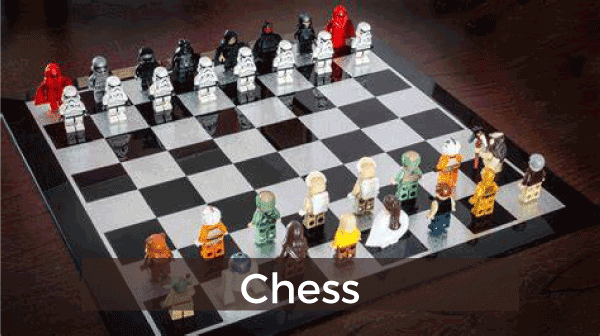
Chess is a leisure and competitive board sport played among two gamers. Chess portions are divided into specific-coloured units. While the sets might not be white and black (e.g., the light set can be a yellowish or off-white shade, the darkish set may be brown or purple), they are constantly known as “white” and “black”. The gamers of the sets are called White and Black, respectively. Each set has 16 pieces: a king, a queen, two rooks, bishops, knights, and eight pawns.
The recreation is played on a rectangular board of 8 rows (referred to as ranks) and eight columns (known as files). The sixty-four squares are referred to as
light and darkish squares by convention; common colours for chessboards are
white and brown or white and darkish inexperienced.
3. Ludo
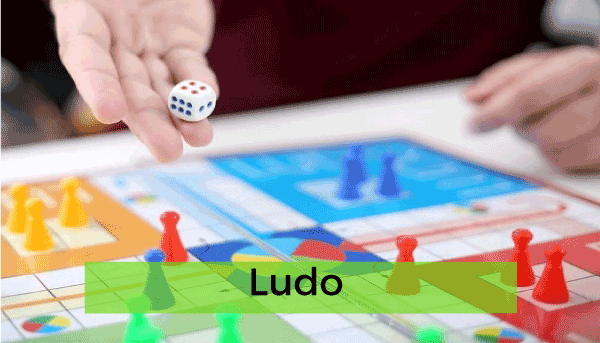
Ludo is a two- to a four-player strategic board game in which players race their four tokens from start to end based on dice rolls.
Ludo is a simplified version of the Indian game Pachisi, similar to cross and circle games. The earliest evidence of this game in India is the portrayal of boards in the Ajanta caves. The Mughal kings of India played this game, with Akbar being a notable example.
4. Tennis

Tennis is a racquet sport in which players compete against one another individually (singles) or in two teams of two players each (doubles). Each player uses a tennis racket with a cable to strike a hollow rubber ball coated in felt over or through a net and into the opponent’s court.
The goal of the game is to manoeuvre the ball so that the opponent cannot play a legitimate return. The player who cannot return the ball will not get point, whilst the other will get a point. Table tennis which is played on a table is also a type of tennis.
5. Carrom
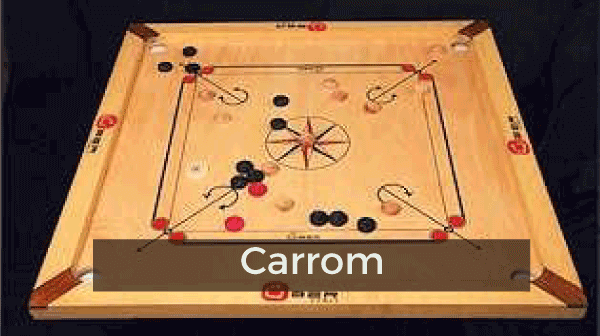
Carrom is a traditional Indian tabletop game. The game is extremely popular in South Asia. Many clubs and cafés in South Asia organise competitions regularly.
Carrom is a popular game among families, especially children, and at social gatherings. Carrom is not a patented game, and it is freely available to the public. Different areas have different standards and rules. It was immensely popular in the United Kingdom and the Commonwealth in the early twentieth century.
6. Pool
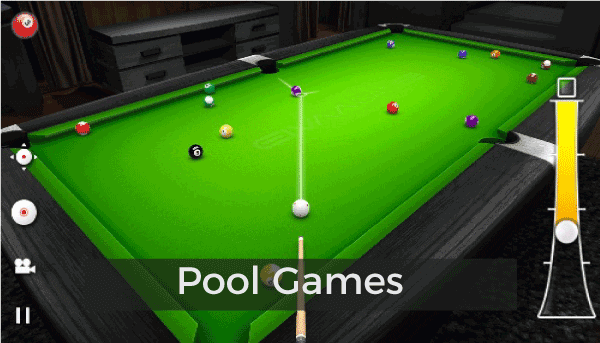
The pool is a cue sport in which balls are dropped into six pockets along the rails of a table. Some of the most popular pool games include eight-ball, blackball, nine-ball, ten-ball, seven-ball, straight pool, one-pocket, and bank pool. Some pool-industry associations use and prefer the general name pocket billiards; however, this is a broader classification that includes games like snooker, Russian pyramid, and Kasia, which are not considered pool games.
The conventional term pocket billiards is now and again also used and favoured by a few pool-industry bodies but is technically a broader category, together with video games inclusive of snooker, Russian pyramid, and Kasia, which are not known as pool video games. In most arena elements, it is usually referred to as simply “billiards”, analogous to the term “bowling”, which is commonly used to consult the sport of ten-pin bowling. There are also pool and carom billiards hybrid video games, American 4-ball billiards, bottle pool, cowboy pool, and English billiards.
7. Musical chairs

Musical chairs is a game that incorporates music, movement, and listening. It is commonly played in schools and at children’s parties.
It is frequently employed at parties as part of a collection of games. A little award or token is usually given to the round winner.
8. Bowling
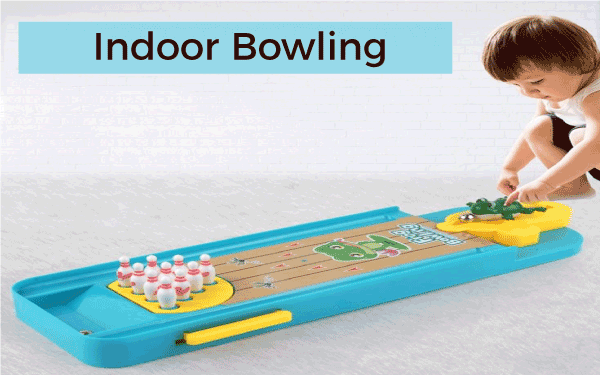
Bowling is a recreational sport where a player rolls a ball towards pins (in pin bowling) or any other objective (in goal bowling). Pin bowling is the most prevalent type of bowling (most usually ten-pin bowling).
However, bowling can also refer to goal bowling in the United Kingdom and Commonwealth countries, such as garden bowls. Pin bowling aims to knock over pins on a long gambling surface known as a lane. If all of the pins are knocked down on the first roll, a strike is made, and a spare is made if all of the pins are knocked down on the second roll.
